All posts by Experian Marketing Services
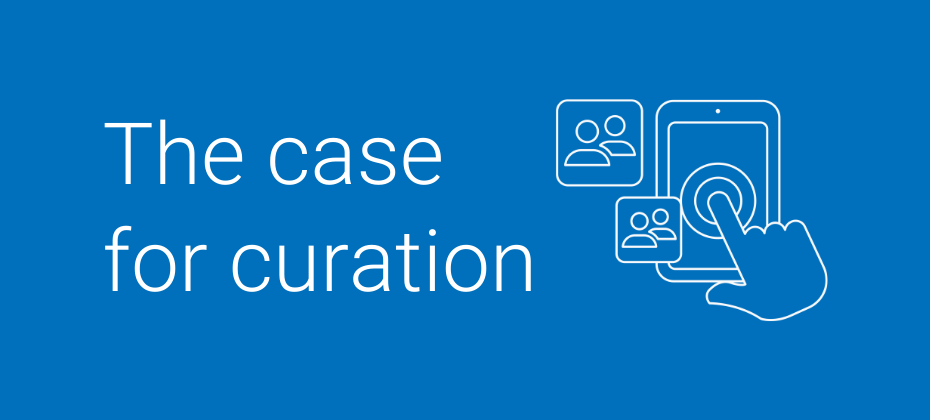
Programmatic media buying isn’t getting any easier. Buyers face rising signal loss, shrinking margins, and growing pressure to perform in a privacy-first world. Add in fragmented tech, shifting privacy regulations, and inconsistent identity signals, and reaching the right audience at scale has never been more complex (or costly). Meanwhile, advertisers demand more transparency, publishers want control, and consumers expect relevance without feeling watched. Open exchanges, legacy data management platforms (DMPs), and spray-and-pray strategies just aren’t cutting it. That’s why curation has become a trending topic in the AdTech space. In programmatic advertising, curation refers to the strategic integration of enriched data and quality inventory into a single package — often executed as a private marketplace (PMP) deal. This approach reshapes how campaigns are built, activated, and optimized by enabling performance-ready buys that reduce waste, increase relevance, and give marketers greater control over outcomes. It’s no wonder then that curation investments are accelerating, PMPs are gaining traction, and buyers are shifting budgets accordingly. Over 66% of the $150 billion+ open exchange programmatic market now flows through curated PMPs, with industry giants like Google publicly backing curation as a core strategy. So what exactly is programmatic curation, and why is it becoming essential for privacy-conscious, performance-driven marketers? Let’s break it down. What does programmatic curation mean in AdTech? Programmatic curation is the process of filtering, structuring, and packaging enriched data with high-quality programmatic inventory — enhanced by real-time optimization to create more targeted, efficient, and transparent media buys. Instead of buying at scale and hoping for the best, curation prioritizes accuracy and value over volume, resulting in more targeted, efficient, and transparent media buys. As privacy regulations reshape targeting, curation is becoming a key differentiator in an increasingly crowded AdTech space. It connects robust data with quality supply, helping marketers stay effective while giving publishers new ways to monetize with control. But not all curation is created equal. Programmatic curation requires three core elements: 1. Unique data Unique, privacy-compliant, and valuable. 2. Strong supply connections Access to quality inventory from publishers at scale. 3. Optimization tools To measure, refine, and improve performance during a campaign and improve performance throughout the campaign lifecycle. Without all of these elements, a so-called “curator” may simply be repackaging inventory without delivering the full value of a curated approach. Why does curation still matter with cookies sticking around? While third-party cookies and mobile IDs like IDFA haven’t gone away, the industry has already pivoted in anticipation of their decline. Even without Google flipping the switch, signal loss is here thanks to Apple’s ATT, tighter compliance rules, and new tracking restrictions. Marketers are dealing with less data, more fragmentation, and fewer reliable IDs. So if you want to run an effective, scalable media campaign today, you need tools that go beyond third-party cookies. That’s why programmatic curation is gaining ground as a better, more sustainable way to buy media. Investments in programmatic curation are growing, and not just for identity resolution. Marketers are leaning in because it: Combines verified audience data with premium inventory Supports ID-free or context-aware targeting Enables scalable, identity-agnostic strategies Improves data quality through enrichment Creates more controlled, pre-approved media paths via PMPs Experts anticipate that, at some point, publishers will have to lean into this method. “Curation will be bigger than header bidding and as big as programmatic or RTB — that’s our bet.”Andrew Casale, CEO Whether cookies stay or go in the future, curation works for an ecosystem that demands smarter, cleaner, and adaptable media buying. What are the benefits of curation and who wins? Curation is one of the few innovations in AdTech delivering meaningful wins across the ecosystem. By bringing better data, cleaner supply, and more intentional targeting into programmatic advertising, it helps brands, agencies, and media buyers drive stronger performance, gives publishers more control, and creates a more respectful experience for consumers. And unlike traditional approaches, curation is built for what’s now and what’s next. Here’s how each group benefits and why it matters. Brands and agencies Curation helps brands and agencies run smarter, more efficient campaigns by connecting high-quality data with premium supply. It delivers: More efficient supply paths with less waste and better performance Lower costs than DMP segments and open exchange buys Cleaner, pre-vetted inventory that aligns with audience and brand goals Future-proofed buying via cookieless and log-level data integrations Stronger targeting and measurement driven by enriched data and actual usage signals instead of modeled assumptions Better outcomes through real-time supply and data optimization Publishers For publishers, curation makes inventory more addressable without giving up control. It enables: Smarter packaging that aligns with buyer needs and campaign goals Higher CPMs by curating inventory above open exchange floors More control over how audiences are accessed and how inventory is monetized Access to higher-value demand through curated, data-backed deals Better protection of proprietary audience in a privacy-conscious environment Consumers At the end of the chain, curation improves the ad experience for those who matter most: your audience. It supports: Higher-quality content alignment for more natural, less disruptive ad experiences tailored to their interests Less invasive tracking, as targeting becomes more data-smart and privacy-aware, with reduced reliance on legacy identifiers and personally identifiable information (PII). Curation is setting a new standard for how data, inventory, and experience come together across the ad ecosystem. When media is smarter, cleaner, and more intentional, everyone wins. What’s Experian’s role in powering curation? With the acquisition of Audigent, Experian is now more than just a premier data provider. We’re also a full-service curation partner. Together, we deliver end-to-end programmatic curation across data, inventory, and optimization, helping brands and publishers unlock smarter, more scalable media strategies. What Experian + Audigent enable Whether you need speed-to-market with pre-curated deals or white-glove custom deals, Experian and Audigent make it easier to activate high-performing, privacy-compliant campaigns at scale with: End-to-end curation across data, inventory, and real-time optimization Pre-packaged and custom PMP deals with built-in performance signals Scalable, privacy-first media solutions aligned to brand objectives, verticals, and KPIs These aren’t just theoretical; curated marketplace deals are already delivering measurable gains. In OpenX, Audigent-curated campaigns increased bid competition by 20% and drove a 118% spike in impressions won over a two-month period. Key benefits for partners By bringing together our data depth and Audigent’s curation technology, we offer our partners a full suite of value-added capabilities, including: High-quality, verified data ranked #1 in accuracy by Truthset and powered by Experian’s identity graph and deep programmatic data insights Data enrichment layers that boost addressability, accuracy, and contextual relevance Privacy-compliant infrastructure built for secure, cookieless data use at scale Platform integration across leading demand-side platforms (DSPs) and supply-side platforms (SSPs) for seamless activation and optimization How Boiron achieved smarter reach with Audigent’s curated PMP strategy A leading homeopathic brand partnered with Audigent to scale customer acquisition for its flu relief product without increasing media investment. They wanted to reach new, privacy-compliant audiences while improving CPA across display and video. Using Audigent’s curated SmartPMPs and CognitivePMPs, the campaign delivered measurable performance improvements: 80% lower CPA on display than historical benchmarks 40% lower CPA on video 30% reduction in data costs Significant media efficiency gains through real-time supply and data optimization Fully future-proof targeting with zero reliance on cookies or MAIDs See how Boiron’s success story is just one example of how curated deals backed by Experian identity and Audigent’s optimization technology can deliver efficiency and impact in a privacy-conscious environment. Our curation capabilities Together with Audigent, our curated solutions go beyond basic packaging. Every deal is designed for performance, privacy, and relevance, so you can activate smarter media with greater confidence: Deal ID-ready audiences for fast, turnkey activation Performance-specific curation, including viewability, CTR, and outcome-based targeting Custom audience + inventory packages tailored to campaign goals Vertical-specific curation for industries like auto, retail, CPG, and financial services Real-time optimization signals embedded into every curated deal Don’t wait: Curate today The future of programmatic advertising won’t be won by those waiting for perfect signals, clean cookies, or simplified tech stacks. It’ll be won by marketers and publishers who embrace smarter, cleaner ways to activate their data, inventory, and strategy now. With Experian and Audigent, you’re not just getting better data but also a partner that helps you activate it with accuracy, privacy, and performance at scale. Whether you’re trying to reduce media waste, gain supply path control, or future-proof your campaigns, curated deals can get you there faster. Let’s build a curation strategy that gives you control in a chaotic ecosystem. Latest posts
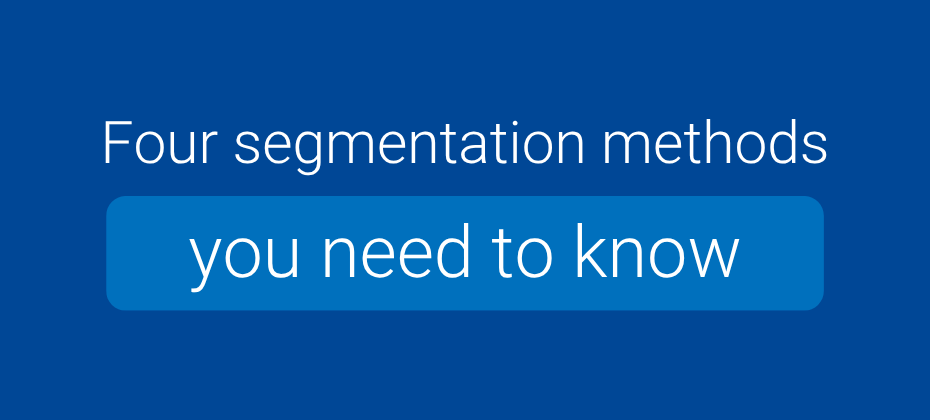
Marketing without segmentation is a lot like shouting into a crowded room and hoping the right person hears you. Without a clear way to communicate in a noisy marketing environment, your message gets lost in the mix. With segmentation, you can identify your target audience, speak to their needs, and deliver the right message at the right moment. Companies that use segmentation are 130% more likely to understand customer motivations, resulting in more effective campaigns and deeper audience relationships. In this article, we’ll break down four of the most effective customer segmentation methods, when to use each, and how Experian’s audience solutions can help. What is segmentation in marketing? Segmentation is the process of splitting a large audience into smaller groups that share similar traits, like demographics, location, behavior, or firmographic characteristics. As a marketer, these segments enable you to choose channels, messaging, and offers that resonate with each group. Whether you’re targeting new homeowners in Texas, loyalty shoppers in retail, or small business decision-makers in finance, segmentation helps you stand out to them and get results. Why should marketers segment their audiences? Effective audience segmentation fuels accuracy, performance, and personalization at scale. Here's why you should invest your time and marketing budget in honing your audience segments. Maximize your marketing ROI Nobody wants to waste money talking to the wrong crowd. Using various methods of segmentation, you can focus on those who want to hear from you — and the payoff can be huge. For marketing channels like email, segmentation can drive up to 760% more revenue than non-segmented campaigns. The more targeted your message, the better the return. Create a unified omnichannel strategy Segmentation helps ensure that every channel, from email and social media to display, SMS, and direct mail, operates from the same playbook. Once you define your target audience segments, you also need a trusted identity partner to sync them across platforms and environments. This ensures you can deliver consistent, personalized experiences at every touchpoint and your audience receives the same message in the proper context, regardless of where they engage. Strengthen customer loyalty Roughly 75% of consumers are loyal to brands that “get” them. When you strive to understand your customers, they’re more likely to stay. Segmentation enables you to personalize communications based on your target segment’s values, behaviors, or preferences, encouraging repeat business. Expand into new markets With segmentation, you can analyze existing customers to identify common traits and use that data to pinpoint similar groups in new regions or markets. For example, if your top customers are middle-class parents in suburban areas, you can target lookalike segments in other cities with tailored messaging. This makes it easier to expand with confidence, knowing you're reaching people who are more likely to convert. Lower customer acquisition costs Rather than forcing you to cast a wide net, segmentation enables you to focus your budget on high-potential audiences across channels, reduce acquisition costs, and minimize wasted spend on low-intent audiences. Four segmentation methods and examples Let’s look at four different methods of market segmentation. We’ll define each, share when to use them, and give real-world examples to help you apply them. 1. Demographic segmentation Demographic segmentation breaks your audience into groups based on gender, income, age, education, marital status, occupation, and household size. It’s one of the most foundational segmentation methods because it’s easy to implement and often tied directly to buying behavior. Demographic data makes it easier to get the tone, offer, and channel right from the start. And when you combine demographic segmentation with other segmentation methods, such as behavior or location, the impact multiplies. When to use it Use demographic segmentation when your product or service is clearly more relevant to people in a specific life stage, income bracket, or household type. Among all methods of market segmentation, demographic data is often the easiest starting point. It’s especially effective for industries such as financial services, healthcare, education, retail, and others, where consumer needs change based on demographics. Examples As a real-world example, a health supplement company used Experian data to segment its ambassador program audience into four demographic groups based on lifestyle and household makeup. These included younger singles, value-seeking families, high-income spenders, and older empty nesters. Applying these insights at registration allowed the brand to deliver personalized, channel-specific communications that boosted acquisition and retention. The approach led to stronger engagement and more meaningful customer connections. 2. Geographic segmentation This method of market segmentation categorizes people by location, including country, region, state, city, zip code, or even climate. It’s a simple yet effective way to tailor your marketing, as location often influences everything from lifestyle and language to shopping habits and product needs. It’s most often used among brands with physical locations or region-specific campaigns. Whether you're promoting snow boots in Colorado or sunscreen in California, geographic segmentation helps you stay relevant to the local context. When to use it Geographic segmentation is ideal when your offer or message changes depending on climate, culture, availability, or local regulations. It’s also helpful for planning market expansion or testing the performance of different methods of market segmentation across regions. Examples One home furnishings retailer partnered with Experian to understand how customer needs varied across store locations. Using a mix of client data and Experian demographics, we segmented stores based on their surrounding customer base, like urban, white-collar shoppers in metro centers versus lower-income households in more remote cities. These insights enabled the retailer to tailor inventory, marketing strategies, and ad copy for each store type, resulting in more relevant customer experiences. 3. Behavioral segmentation Behavioral segmentation centers on how people live their lives — their interests, habits, and decision-making patterns. It includes factors like past purchases, engagement frequency, brand loyalty, product usage, browsing patterns, and responsiveness to offers or promotions. Among all of the segmentation methods, this one provides insight into intent, helping you go beyond who your audience is to understand what they do. You can use behavioral insights to re-engage former customers with relevant offers, reward loyal buyers with personalized perks, or guide high-intent shoppers toward conversion with timely nudges. When to use it Behavioral segmentation is best when you want to personalize based on intent, habits, or engagement stage. It's particularly useful for retention, reactivation, or cross-selling strategies. Examples In practice, a national big-box retailer partnered with Experian to better understand customer behavior during grocery store visits. The goal was to identify distinct “trip missions” that could drive category trial and increase basket size. We analyzed everything from basket contents to customer composition and segmented visits into 11 unique missions. For example, the “All Aisles Online” segment represented large households (often homeowners with families) stocking up on household staples through online orders. In contrast, the “Marketable Mission” segment captured smaller, likely renter households making quick trips for non-essentials. These behavioral insights empowered the retailer to adjust promotions based on the intent behind each visit, strengthen customer relationships, and drive growth. 4. Firmographic segmentation (B2B) Firmographic segmentation is like demographic segmentation for businesses. It groups B2B audiences based on attributes such as annual revenue, location, company size, industry, and organizational structure. You can also segment by job title or decision-maker role to better target key stakeholders. This method is great for aligning your messaging, sales strategy, or product offerings with the unique needs of various business types. A startup in the tech sector will likely respond to a very different pitch than an enterprise manufacturer, and firmographic data helps you speak to both with precision. When to use it Use firmographic segmentation when marketing to other businesses, especially when your product or service has different benefits depending on business size or sector. Examples Recently, a B2B client partnered with Experian to gain a deeper understanding of the revenue potential of their existing business customers. Using firmographic data, we segmented the client’s customers into distinct groups based on the characteristics most strongly tied to spending behavior. For each segment, we calculated potential spend, defined as the 80th percentile of annual spend within that segment. This allowed the client to identify high-value accounts with untapped growth potential. For example, one customer, ABC Construction, had spent $4,750. But based on their segment’s profile, their annual potential was $9,000. That insight revealed a $4,250 opportunity to deepen the relationship through more targeted marketing and sales efforts. Best practices for market segmentation Regardless of the segmentation method you use, the following best practices will help you maximize the benefits of your efforts. Start with clean, reliable data Segments are only as good as the data behind them. If your data is outdated, inaccurate, or incomplete, your segments will result in ineffective targeting and a wasted budget. Utilize accurate, compliant, up-to-date sources like Experian Marketing Data, ranked #1 in accuracy by Truthset, to ensure your targeting is on point. Test and refine segments continuously Business goals, market conditions, and behaviors are constantly changing. What worked last month or even last week might not work today. By adjusting your segments over time, you make sure your marketing stays relevant, focused, and effective. Use A/B testing, performance metrics, and audience analytics to iterate on your segments and improve results over time. Align segments with personalized messaging and offers Each segment has distinct needs, preferences, and motivations, which means generic messaging won’t resonate effectively. Once you’ve built your segments, personalize your creative, copy, and offers to appeal to each group and increase the likelihood of engagement and conversions. Integrate segmentation across all platforms If someone sees one message in an email and a completely different one in an ad or on your website, it creates confusion and weakens trust. From CRMs and email platforms to ad tech and analytics tools, make sure your segmentation method is applied consistently across every channel to improve performance and build a cohesive brand experience. Segment your audiences with Experian Effective audience segmentation is at the heart of every successful marketing strategy, but in this fragmented, privacy-conscious landscape, grouping your audience into meaningful, actionable subgroups is more challenging than ever. That’s where we come in. With coverage of the entire U.S. population, Experian helps marketers define and categorize broad audiences into precise segments using rich data on demographics, behaviors, financial profiles, and lifestyle traits. These insights make it easier to personalize messaging, optimize media spend, and drive better outcomes. From ready-to-use syndicated audiences to custom segments and even Contextually-Indexed Audiences that align targeting with content, Experian offers flexible segmentation solutions that perform across digital, TV, programmatic, and social channels. In our most recent release, we introduced over 750 new and updated audience segments across key categories, including a brand-new category for Experian, giving marketers more accurate, behavior-based targeting options than ever before. 135+ new CPG audiences, a brand-new category for Experian, built from opt-in loyalty card and receipt scan data 240+ new automotive audiences covering ownership and in-market shoppers 100+ new high-spending behavior audiences focused on specific merchant categories 24 new wealth and income segments with refined household net worth tiers 13 new lifestyle-based housing audiences for family- and household-focused targeting 250+ refreshed financial segments with improved naming conventions for better discoverability and clarity Together, these segments give marketers more accuracy to reach high-intent consumers based on real-world behaviors, spending patterns, and financial capacity. Audience solutions powered by consumer insights Experian Marketing Data, one of the most comprehensive and accurate consumer databases in the U.S., is the core of our segmentation capabilities. Backed by over 5,000 demographic and behavioral attributes, it helps you understand not just who your customers are but how they live, shop, spend, and engage, too. Each audience segment is built with privacy and precision in mind, using a blend of demographic data, financial behaviors, lifestyle signals, and media habits. With these consumer insights, we’ll help you uncover meaningful patterns that lead to smarter strategy. Experian’s pre-built audiences Our syndicated audiences are pre-built, ready-to-activate segments based on shared characteristics from age and income to purchase behavior and lifestyle indicators. When speed and scale are a priority, these segments offer a fast, effective way to reach your target audience. Experian’s 2,400+ syndicated audiences are available directly on over 30 leading television, social, and programmatic advertising platforms, as well as within Audigent for activation within private marketplaces (PMPs). Here’s what’s new from our August 2025 release: CPG shoppers by category (e.g., Frozen Food Shoppers, Multi-Vitamin Shoppers) Luxury EV owners and auto brand shoppers (e.g., Rivian, Polestar, Cadillac) High spenders in specific categories (e.g., men's grooming and women's accessories) Ultra high-net-worth households (e.g., Net Worth $50M+) and likely home sellers Young Family Homeowners and Growing Family Apartment Renters Custom audiences for specialized targeting Need a custom audience? Reach out to our audience team, and we can help you build and activate an Experian audience on your preferred platform. Additionally, work with Experian’s network of data providers to build audiences and send to an Audigent PMP for activation. Contextually-Indexed Audiences Experian’s Contextually-Indexed Audiences offer a privacy-safe way to reach relevant consumers in the moments that matter without relying on identity signals or third-party cookies. These segments combine Experian’s consumer insights with page-level content signals, enabling you to align targeting with intent and mindset, even in cookieless or ID-constrained environments. Want to take your segmentation strategy to the next level? Let’s talk. We’ll help you define your audience in ways that drive real results. Talk to our team about your segmentation methods today Latest posts

Discover how the AI revolution is reshaping commerce, enhancing customer experiences, and driving business growth.
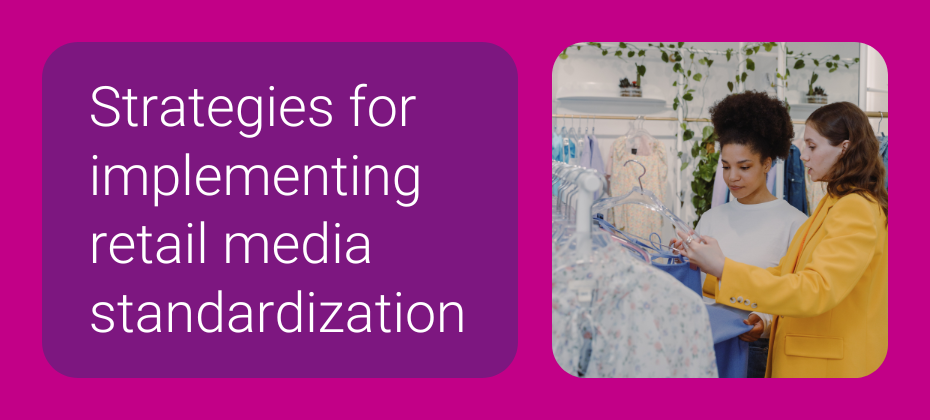
Discover how retail media standardization can streamline your marketing efforts, enhance campaign efficiency, and drive better results.
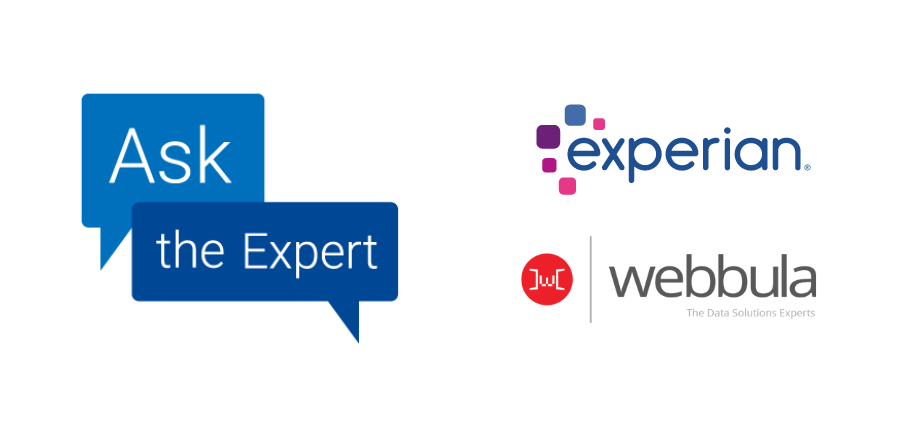
In our Ask the Expert Series, we interview leaders from our partner organizations who are helping to lead their brands to new heights in ad tech. Today’s interview is with Jordan Feivelson, VP, Digital Audiences at Webbula. Jordan is a 22-year advertising industry veteran who has worked for media properties such as WebMD and Disney. Over the past ten years, he has transitioned to the data and programmatic space, including growing the data business for Kantar Shopcom and Adstra. What types of advertisers might benefit from utilizing Webbula audiences across various verticals? Can you provide examples of how different industries successfully leverage your data to achieve specific campaign goals? Most advertisers can leverage Webbula’s award-winning attributes for their activation initiatives. Webbula offers approximately 3,000 syndicated segments covering categories such as Demographics, Automotive, Political, Mortgage, B2B, Hobby/Interest/Lifestyle, and Interests & Brand Preferences (brand name targeting). Audience insights and marketing strategies What specific types of audience segments does Webbula provide? How can advertisers leverage these segments to craft more effective, personalized marketing strategies? Webbula has incredible depth and breadth within its verticals, giving marketers the tools to deliver targeted messaging effectively. Our Demographic, B2B, Mortgage, Automotive, and Interest and Brand Preferences segments each contain 500-1,000 segments, all built on deterministic, self-reported, and individually linked data. We ensure the best accuracy with multiple deterministic data points tied to the real world (ex., first name, last name, postal address, and email address). Some examples of our unique syndicated audience types: B2B: A view of the latest industry trends with detailed cuts of the professional world, such as companies with and not within the Fortune 500 companies and job positions that are directors and below. This also includes custom capabilities, including ABM (list of target companies in an activation campaign or by industry code (ex. NAICS, SIC). Interest and Brand Preferences: Consumers who have shown interest and affinity to hundreds of brands (ex., Nike), genres (ex., comedy, hip hop), sports teams, and more. Mortgage: A detailed view of homebuyers’ purchase range, loan type (ex. jumbo loan, standard loan), mortgage amount, interest rate, and more. With Webbula’s audience data, brands can create a comprehensive picture of their audiences down to the individual level and reach them accurately. Data quality, sourcing, and differentiation How is consumer data sourced and curated at Webbula? Are there data quality standards that Webbula establishes for consumer data, and how do you ensure your sources and methods meet these standards consistently? Webbula’s data is aggregated from over 110 trusted and authenticated sources, including publishers, data partners, social media, and more. The data collected comes directly from consumers who self-report information through surveys and other methods. We apply our hygiene filters to mitigate fraud and accurately score the data. Data Collection: The data collected comes directly from consumers who self-report information through surveys, questionnaires, transactions, and sign-ups. This ensures that brands display ads to audiences based on self-identified, cross-channel behaviors, not modeled assumptions. Hygiene Solutions: Webbula applies multi-method hygiene solutions to mitigate fraud and accurately score the data before onboarding, ensuring that all data meets the highest quality standards. Examples of Data Sources: Questionnaires: Self-reported data through surveys, offer submissions, and telemarketing. Transactions: Deterministic data from aftermarket parts, online purchases or services, and more. Sign-ups: Individually linked data from information entered through sweepstakes, infomercials, newsletters, and forms. What differentiates Webbula's data from other data providers in the market? Can you explain the unique value proposition that Webbula offers in terms of data depth and breadth? Due to our extensive experience in data cleansing, we provide the most accurate data within the programmatic ecosystem. TruthSet, the leading programmatic accuracy measurement company, has ranked Webbula as having the highest number of top attributes compared to other data providers with 150M+ HEMs. Additionally, Publicis Groupe and Neutronian further validate Webbula's data quality, underscoring its position as a leader in the industry. Webbula's data stands out in the market due to its unmatched accuracy and quality, achieved through years of expertise in data cleansing. Unlike other providers, Webbula’s foundation lies in its robust email hygiene process, ensuring that all data entering the programmatic ecosystem is thoroughly cleansed. Privacy, compliance, and future-proofing What measures does Webbula take to maintain data privacy and compliance? How do these efforts benefit advertisers in an evolving regulatory landscape and ensure ethical standards? Webbula was created over a decade ago with a future-proof, privacy-compliant foundation. We understand the industry’s rapid changes, including government and state legislation and cookie depreciation. Our goal has always been to build long-term partnerships and ensure we are prepared for industry changes. We rely on validated offline data sources, making us resilient to external influences. Success stories Can you share success stories where advertisers saw significant campaign improvements using Webbula’s data? What were the key factors that contributed to these successes? Our success is measured by client feedback and increased client spend. Webbula has helped several key advertisers achieve six-figure monthly thresholds by providing the most accurate data to meet campaign KPIs. Clients consistently return to use our data, validating our belief that “the proof is in the pudding.” Thanks for the interview. Any recommendations for our readers if they want to learn more? For those interested in learning more about Webbula, reach out for a personalized consultation. Contact us Latest posts
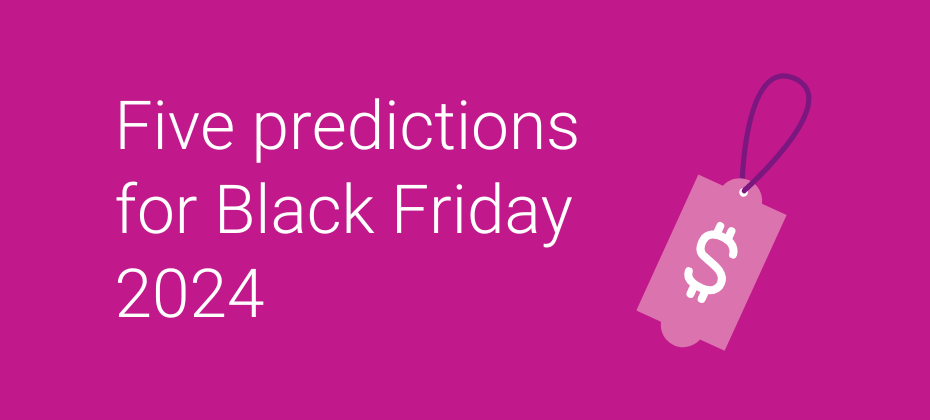
Dive into our analysis of Black Friday 2023 trends to discover key insights that will shape marketing strategies for Black Friday 2024.

Explore how CTV is transforming political advertising for the 2024 elections, offering new opportunities for engagement for a digital-first approach.
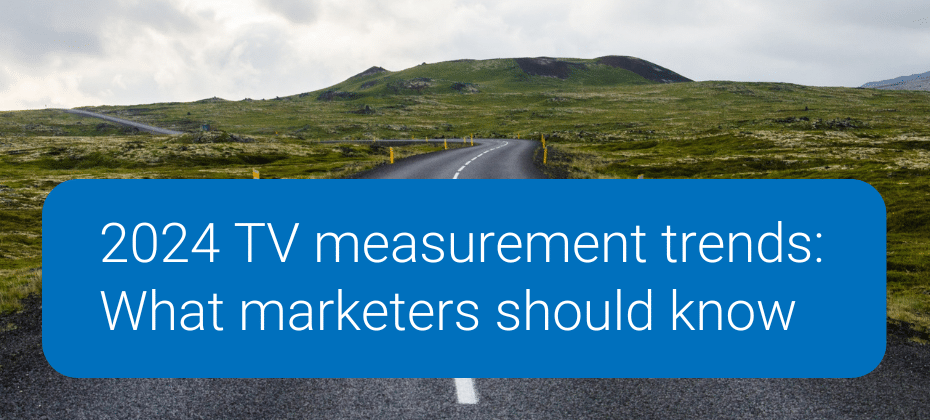
Explore the future of TV measurement with Experian Marketing Services. Stay ahead in 2024 with the latest trends and data insights.
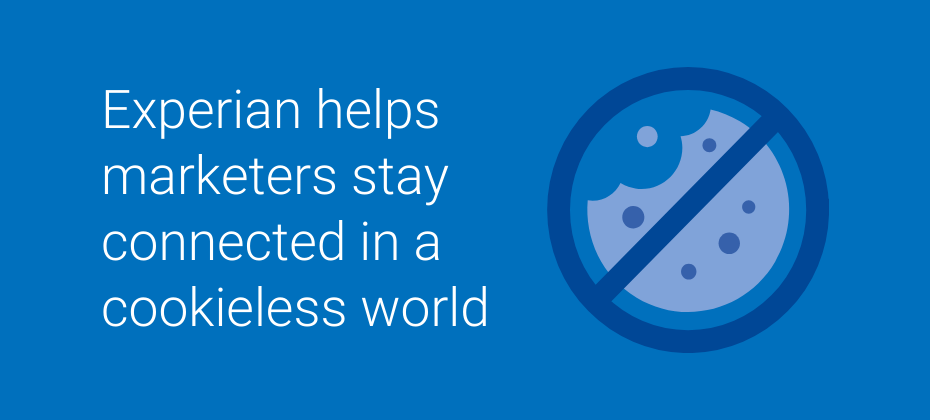
Explore the impact of cookie deprecation on digital marketing and learn strategies to adapt using ethical data practices and first-party data.